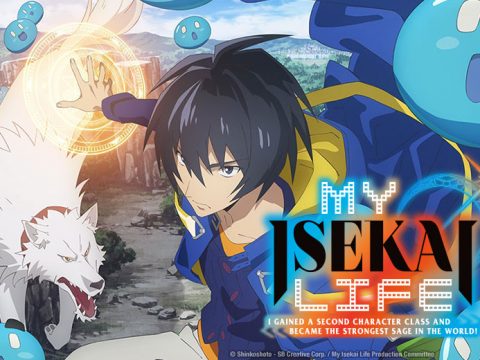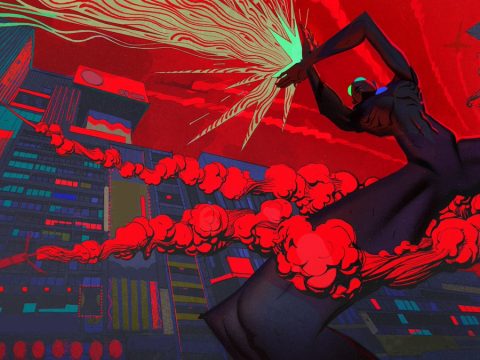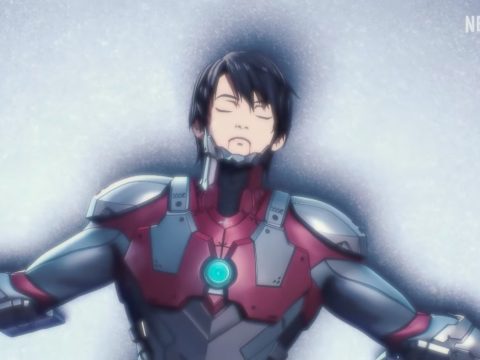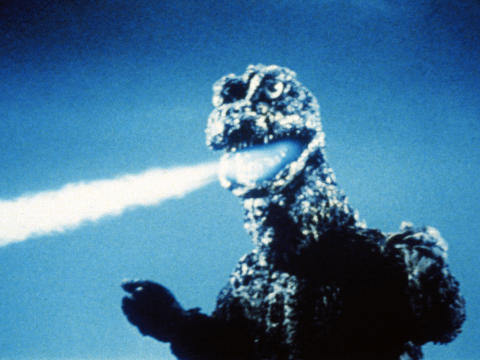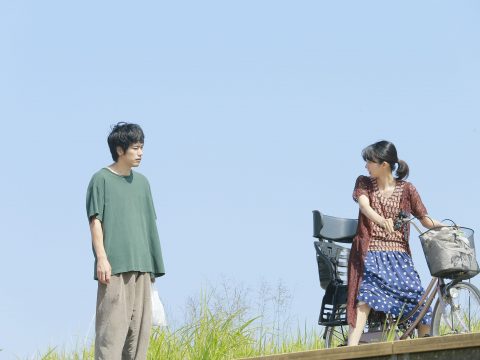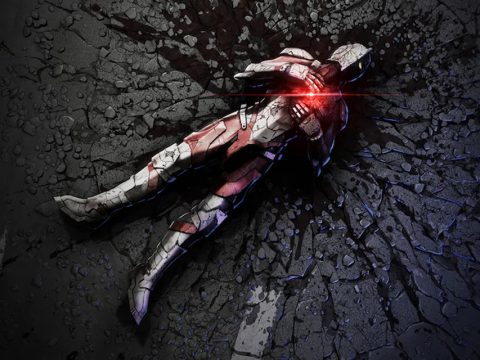On January 2nd, 2010, the Saturday morning ABC Kids line-up debuted the first episode of what fans have called Power Rangers: Remastered. Boasting improved picture and sound, these re-runs of Mighty Morphin Power Rangers are taking the place of the usual yearly Super Sentai adaptation. The exact reasons for this change-up are still unknown, the popular rumor being that it’s thanks to 2009’s Shinkenger being too rife with Japanese culture references that it couldn’t be adapted. (The jaded fan in me wants to believe this for the sake of giggles.) Anyway, as fans tuned in to watch the remastered first episode, “Day of the Dumpster”, they held witness to what I can only describe the result of Bob The Intern getting into the editing suite: an episode loaded with random Batman-esque sound effect graphics, pop art comic panel transitions, freeze frame cut-outs, and every other cliched Adobe After Effects preset one could conceive of. All that was missing from this bright, shiny, A.D.D.-Friendly Edition was a barrage of star wipes. Though one could cry foul of how The Powers That Be have completely neglected the nostalgia factor and the blasphemy/travesty/blah-blah/say no more sir, the only tragedy here is that there is no alternative. With the finale of Power Rangers RPM, the franchise is effectively over unless Disney opts to adapt this year’s series, Goseiger. Otherwise, Ultraman‘s still having trouble getting through the door, and Kamen Rider second chance was canceled.
Wait a minute, you’re probably thinking right now, what do you mean canceled!? Suffice to say, Kamen Rider Dragon Knight, the much-anticipated adaptation of 2003’s Kamen Rider Ryuki got the Axe. Vent. Sort of—due to low ratings and nobody having an idea how to market it after all, the show was cut short on December 26th, 2009, cutting it off in the middle of the three-episode finale. Regardless of any criticisms, the fact that it managed to get onto American television and survive is nothing short of a miracle. Because like anything else that has tried before it, Dragon Knight went up against the barrier that I like to call the “Power Ranger Gag Reflex”. Before going into analogies, you probably already know what I’m talking about: The phenomenon in which anytime an outsider sees something in the Tokusatsu Hero vein, it’s automatically likened to Power Rangers, and scoffed like they’re trying to save face after being caught wearing their Toy Story underwear in the locker room. Even shows like GARO which are dark and violent will always have somebody in the American audience dubbing it “Power Rangery.”
I find it interesting that out of all the countries that Super Sentai and other Tokusatsu Hero shows have been exported to, the only damaging knee-jerk word association comes from America. Look at France, who had the good fortune to see most of the Golden Years of Tokusatsu (1984-1991) uncut and dubbed simultaneously with Japan; at the very worst, the only relatable association was that of Power Rangers‘ 1993 debut being looked upon by some as the “American Bioman”. (Fun fact: This is because three of the mid/late-80’s Super Sentai shows were edited together to form a Robotech-esque “Bioman Trilogy”, starting with 1984’s Bioman, 1987’s Maskman, and 1988’s Taskforce Liveman.) That didn’t seem to grind things to a halt for years to come like the Gag Reflex did. It’s made it almost impossible for these types of shows to gain mainstream popularity in the US, even worse for the fans who clamor and petition for DVD releases. Unfortunately, until MTV or [Insert Favorite Celebrity Here] says otherwise, Power Rangers (or anything like it) is still “Uncool”, which translates to “Untouchable”; this also unfortunately affects any hope for the Ultra Series.
Tsuburaya—the studio behind the Ultra Series—has recently been on quite the pull for prospects in America. It’s not like it’s a foreign idea to them (no pun intended), they did get Ultraman and Ultraseven on U.S. airwaves back in the day… and then there was the 4Kids Entertainment hackjob of Ultraman Tiga that I’d like to think never happened. However, with annoyance of the legal battle with Chaiyo Entertainment now behind them*, one would imagine that the studio is anxious to make up for lost time. This is evident in their recent investment into a new tailor-made localization process, in which they re-shoot their more recent shows with country-specific casts, shot for shot. The dummy run for this was with Ultra Galaxy: Mega-Monster Battle as that series was mostly shot on green screen, but there’s been no word on any interested buyers. With Dragon Knight‘s cancellation, I’d venture to guess that the efforts have probably become even harder, tacking on more reluctance than ever to the idea of bring out another Japanese Superhero show.
So now, where does one (legally) turn to for their fix in this dark time? The past appears the way to go as a few shows have been making the jump to online streaming sites. Firstly, you can head over to Marvel.com right now to watch Spiderman. Yes, it’s THAT Spiderman: The One with the Giant Robot. If you can overcome those inert fanboy sensitivities and welcome the possibility of Flying Brain Monsters and Cowboy Private Detectives, it becomes the greatest thing ever. Also, if you want to be “punk rock”, Jaroo.com has episodes of the only Power Ranger competitor that mattered: Superhuman Samurai Syber-Squad. This adaptation of Denko Chojin Gridman may have consisted of camp but was made with a stroke of genius in my book; Whereas in Power Rangers, the switches between American and Japanese footage were painfully obvious, Syber-Squad manages to match the framerate of the original Gridman footage, making the editing seamless. Believe it or not, there were kids back then who thought it was an entirely American production because of it!
Lastly, if you want to go even further back down the road, Hulu has been gracious enough to upload the entirety of the live-action Giant Robo series, best known as Johnny Sokko and his Flying Robot. Swap out Big Fire for Gargoyle (which is really confusing as Gargoyle is in fact the Japanese name of Big Fire’s personal army), the Experts of Justice with the jetpack-wielding Unicorn organization, and (unfortunately) Ginrei for Token Female Support Team Member Who Is Only Really Good At Serving Tea. Oh and did I mention the part where the main villain, Emperor Gullotine, is so powerful that his fingernails alone can level a city in an atomic explosion?
And aside from going online, if you’ve got some disposable income, invest in the goodies over at GenerationKikaida.com: The wonderful people who brought Kikaider, Kikaider 01, Inazuman, AND Kamen Rider V3 to Region 1 DVD players everywhere–go buy stuff from them! The fact that they’re still in business disproves those out there that would believe that, in the words of Homestar Runner, “The Good Times Are Over” for Japanese Superheroes in America. Options exist, and who’s to say that some brave company out there won’t leap to the challenge of overcoming the Power Ranger Gag Reflex? That or they slap Henshin Belts onto the main cast of Twilight, because that might actually be only other thing that could reverse it.
*For more information on the Chaiyo legal battle, read this excellent article on Scifi Japan:
https://www.scifijapan.com/articles/2007/07/01/legal-victories-for-tsuburaya-productions/


